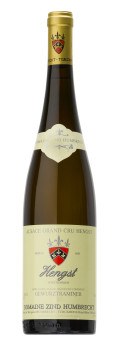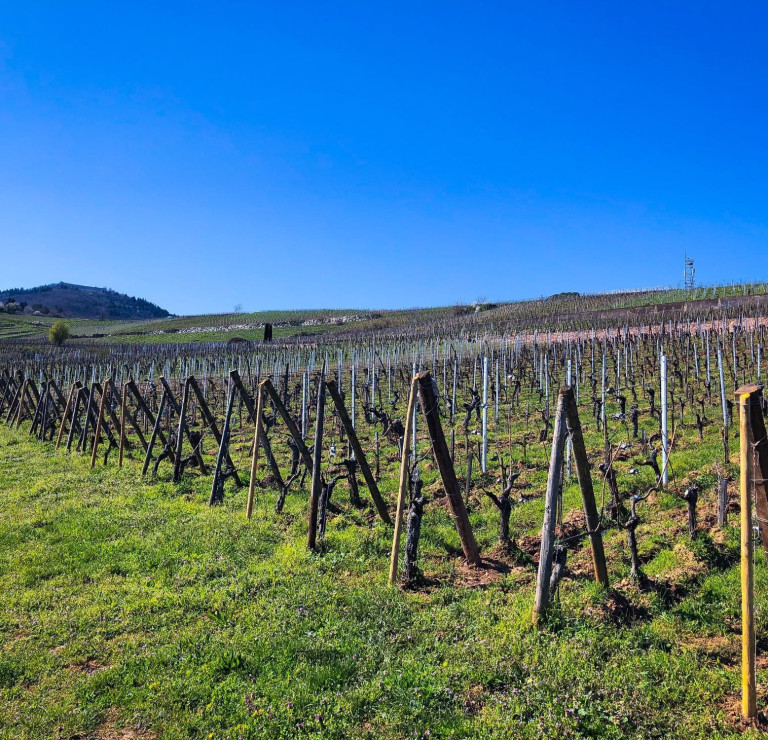
Technical presentation
| Bottling : | September 2002 |
|---|---|
| Acquired alcohol : | 14.5° |
| Residual sugar : | 22.0 g/l |
| Total acidity : | 2.3 g/l H2SO4 / (3.6g/l Tartrique) |
| pH : | 3.9 |
| Yield : | 32 hl/ha |
| Average age of vines : | 50 years |
| Grape variety : | Gewurztraminer |
| Terroir : | Grand Cru Hengst |
| Sweetness index : | 2 |
| Soil : | Calcareous Marl from the Oligocene period, South/South East facing, medium/steep slope |
Description of the wine Gewurztraminer Grand Cru Hengst 2001
The Hengst Grand Cru is located on a hill ideally exposed and in a warm and dry climate, rarely developing lots of botrytis. The calcareous rock is covered with a foot of rich marl and high quality clay. The calcareous shows the breeding and elegance to the wine, and the marl brings the structure and acidity. If other grape varieties succeed also on this vineyard, we always give preference to the gewürztraminer, because it is rare to obtain so much strength and distinction in this grape variety.

Tasting notes
01/2003 : As with the Goldert, the Hengst 2001 femented very vigorously, transforming most of the grape sugars. The mouth structue is dominated by the power and breed of this vineyard, hiding the little residual sweetness. On the nose and on the palate, the aromas are very spicy and smoky, overpowering the more classic floral notes. The finish is long but quite strict.

The Hengst Grand Cru of Wintzenheim
The Hengst was first mentioned in the 9th century in an endowment of the Murbach Abbey. The lord of Haut Landsbourg as well as the bailiff of Kaysersberg shared the feudal rights up to the Great Revolution, whilst various noble families, abbeys and the bourgeoisie of Colmar exploited important parcels.